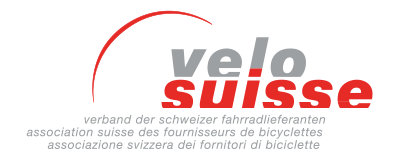Significant increase in bicycle sales
(SFZ) In 2007, 314,000 new bicycles were sold in Switzerland, 4.9% more than in 2006. Since 2003, the sales curve has been pointing steeply upwards, with mountain bikes still leading the way, followed by city bikes. The e-bike, of which almost twice as many units were sold as in the previous year, is on course for success.
In 2007, the bicycle industry shifted up a gear in the sale of new vehicles. Whereas 267,000 bicycles were sold in 2003, last year the figure was 314,000. Cycling is trendy, and mountain, city, racing and electric bikes of all kinds are often and gladly used in leisure time. The market is increasingly dual-track: on the one hand, there is a demand for reasonably priced mass bikes, which are offered at prices starting at 199 francs. However, good quality cannot be expected from such cheap bicycles, repairs are hardly worthwhile, and the trend towards disposable bicycles has begun. On the other hand, the demand for middle and upper class bicycles is increasing. Thanks to their high-quality construction and high technical functionality, these bicycles are riding in the opposite direction. They offer a long service life and a high emotional, fun and lifestyle factor.
Large distributors/discounters as well as the specialist trade are growing
Inexpensive bicycles are the domain of major distributors and discounters, while specialist retailers focus on quality, mature technology and good advice and dominate the medium and upper class segment. This segmentation is reflected in the sector's sales: of the total sales of CHF 370 million generated by new bicycles, CHF 317 million or 85.7% were attributable to the specialist trade, a slight increase on 2006. Although the large distributors/discounters were able to increase the number of units sold, they lost a slight share in value as a result of the ever lower dumping prices of the cheapest bicycles.
Twenty years after its introduction, the mountain bike with lugged tires still burns its trail into the terrain with great success. For most MTB riders, the latter consists of a mundane asphalt road, but the fashionable, emotional look and multifunctional uses are selling points. The city-compatible upgrade with mud flaps, lights and luggage racks by around 50% of the owners proves that it is not the slogan "form follows function" that is in fashion with mountain bikes, but "function follows form". The success story of the electric bike is quite different. For many buyers in the city and conurbation it is THE vehicle for today's time: emission-free, quiet, effortless and easy to operate combined with the advantages of a normal bicycle. With 5,800 units sold (3,100 in 2006), the breakthrough to the mass vehicle seems to have been achieved in Switzerland as well. Insiders expect annual growth rates of 50 to 100 % each for the next three to four years. Compared to mountain bikes and electric bikes, the city bike with complete everyday equipment, which is rather unobtrusive on the market, has been a safe bet for the two-wheeler industry for decades. With 87'000 units (26 and 28 inch bikes together) it clearly occupies second place behind the MTB's. The trend is towards products with hub gears, hub dynamos, stiff frames - ideal companions for weekend trips and everyday use. Although the number of road bikes is far from the level of mountain and city bikes, with 13,800 units, it is a strong sales driver for many specialist dealers thanks to prices ranging from mid-range to upper class. On the other hand, they play practically no role in the wholesale distribution/discount market. Demand for service and repair work, for spare parts and accessories, and for clothing and equipment also increased significantly. With an estimated annual turnover of CHF 360 million, this segment almost matches the turnover from the sale of new vehicles.
March 27, 2008
